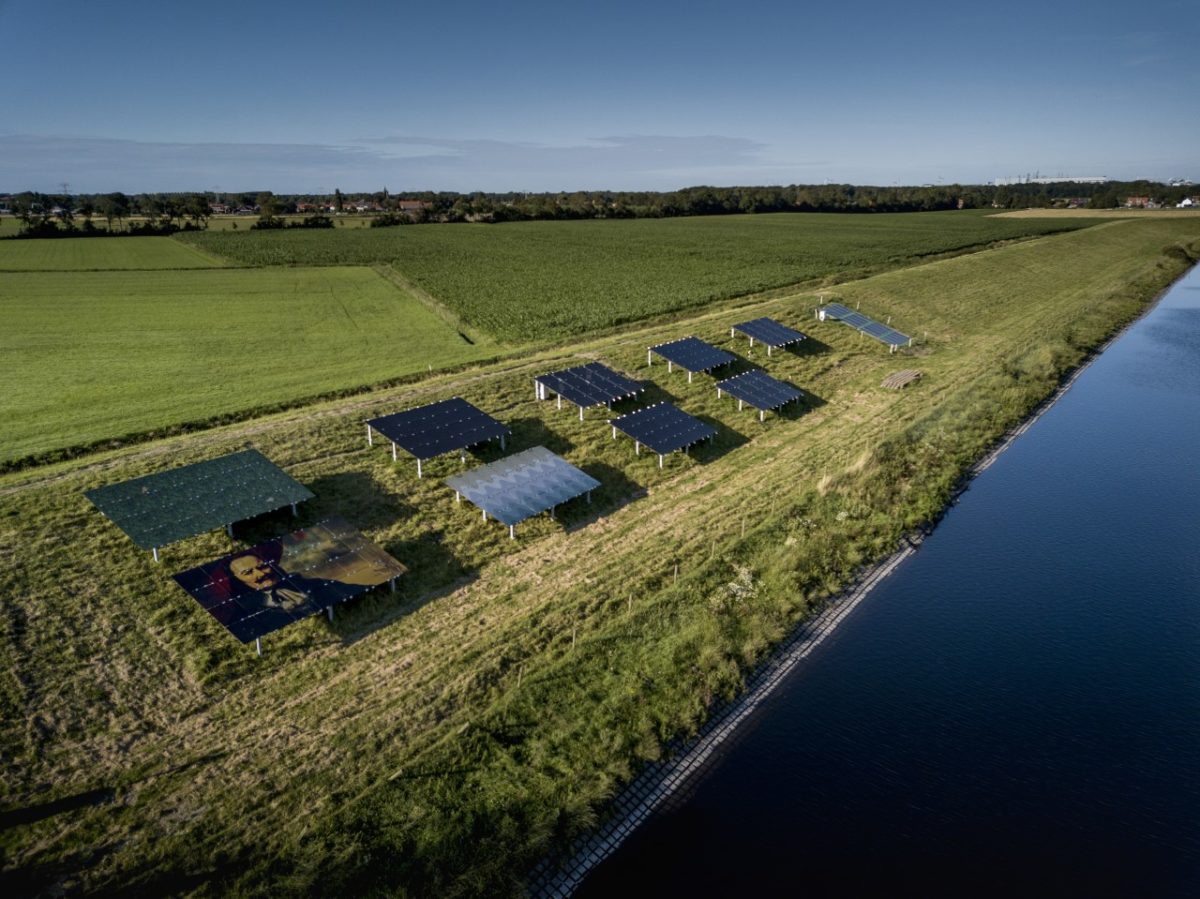The Dutch authorities are struggling to identify surfaces on which to deploy large-scale PV plants due to the limited availability of land. In recent years, research institutes and private companies across the densely populated country have tried to prove the feasibility of solar projects on surfaces that do not damage agricultural land, including rooftops, road noise barriers, onshore and offshore water surfaces, and bike lanes.
However, the country also has 3,500 km of dikes that could be used for PV. This is the goal of the Dutch Foundation for Applied Water Research (STOWA) and the Netherlands Organisation for Applied Scientific Research (TNO), which are working on a joint research project to determine how much PV can be installed on such surfaces, and at what economic and environmental cost.
Initial project
Developers have already installed a 5 MW solar array on a dike near Groningen. “This dike has no water-barrier function anymore,” Maarten Dörenkämper, a researcher at TNO, told pv magazine.
The Dutch water authorities are currently reluctant to give permits for the construction of PV systems on dikes, however.
“The outcome of our research project should give the water authorities more tools to assess a permit application,” Dörenkämper said, noting that such projects would likely inject power into the grid. However, self consumption may also be considered, especially for water-pumping systems.
Dörenkämper said economic feasibility can be achieved. “This will depend on the specific location, where the project is planned,” he said.
PV systems may need to be constructed in ways that improve the original functionality of the dikes. That could present an attractive economic scenario, as dikes need to be regularly reinforced, regardless of solar PV development.
However, there are concerns about the technical feasibility of such plants. “There is concern about the grass mat, because a part of the light will be taken away,” Michelle Talsma, research manager at STOWA, told pv magazine. “There is also concern that during storms the ‘body of the dike’ will be damaged.”
The presence of cables for PV systems presents another potential danger. “Dikes are tricky because there may be a conflict with other goals like good water quality … agriculture or nature goals,” Talsma added. “A dike is primarily built for water safety and this function should never be endangered. For this reason, deploying PV on dikes is a real challenge.”
Erosion impact
Dörenkämper specified the types of erosion that could be avoided with the addition of PV systems. For example, if large water forces are applied to the modules, they should not transfer this force toward the dike, he said.
“In the case of extremely high water levels, when the water is pushed hard toward the dike by waves, or maybe even partly over the dike, the panels are subjected to a force induced by the water,” he explained. “In that extreme case, the mounting structure needs to break. Maybe this can be compared with a crumple zone of a car.”
Researchers are testing special panels with such characteristics in the first projects, but STOWA and the TNO have yet to reveal any additional details. They are also looking at different ways to provide the grass beneath the panels with sufficient light and water. “But most of the projects will be realized with conventional PV panels,” Dörenkämper said.
The PV systems should not not excessively erode the grass beneath the panels and cable and mounting structures should not be on the ground. But as dikes are long and relatively narrow, more cables will be needed compared to conventional square-shaped solar arrays.
PV potential
The construction of similar facilities might trigger social opposition, however. Dikes have cultural and recreational value, and development may take longer than it does with traditional PV projects. In addition, construction is generally not allowed on dikes during the storm season, which runs from October to March.
Despite the list of challenges, STOWA believes that the Netherlands has the potential to build 2.9 GW of PV on dikes. Its experts have identified around 1,500 hectares that could be suitable for solar deployment, which would be enough to ensure annual power generation of 2.5 TWh.
“I believe within a few years, PV systems can be deployed on non-dormant dikes,” Dörenkämper concluded.
This content is protected by copyright and may not be reused. If you want to cooperate with us and would like to reuse some of our content, please contact: editors@pv-magazine.com.




In the Central Valley of California, a key concern would be preserving the ability to inspect the sides of a levee for control of burrowing animals. The well-elevated array pictured seems to address that requirement. Howevet, water velocities as low as several feet per second along a levee, and river-swept debris, would preclude waterside installations. Perhaps these are not issues for dikes facing the North Sea? Landside arrays would seem quite practical in California, perhaps installed over shallow-buried geotextile in case annual grasses are impacted by shading.